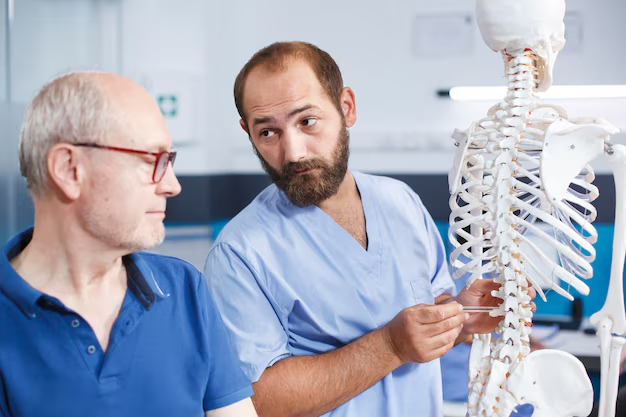Can Scoliosis Be Corrected? Understanding Your Options and Next Steps
Scoliosis is a term you might have come across if you or a loved one has experienced a noticeable curve in the spine. As mysterious and concerning as it sounds, scoliosis affects many people worldwide—mostly teenagers—but it also impacts adults. The big question that looms over those experiencing it is: "Can scoliosis be fixed?" The road to understanding this condition involves exploring treatment options and embracing informed decisions that align with individual needs and lifestyles.
What is Scoliosis?
Before we dive into solutions, it's essential to understand what scoliosis actually is. Scoliosis is a lateral curvature of the spine, which is identified as any curvature of the spine measuring over 10 degrees. The curves can form an "S" or "C" shape in the spinal column, and they may twist the spine between the top and bottom of the curve, affecting balance and posture.
Types of Scoliosis:
- Idiopathic Scoliosis: The most common type, especially during adolescence. The cause of this type is unknown.
- Congenital Scoliosis: This type occurs due to a malformation of the spine during fetal development.
- Neuromuscular Scoliosis: Associated with conditions such as cerebral palsy or muscular dystrophy.
- Degenerative Scoliosis: Generally found in adults; results from a degenerative spinal condition.
Understanding Scoliosis Treatment Options
Can scoliosis be fixed? The answer is not simply a "yes" or "no." Instead, it involves a multifaceted approach to managing the condition based on severity, kind, and age. Here's a look at common treatment routes:
Monitoring and Observation
In mild cases, particularly with children and adolescents, scoliosis can be observed over time. This approach involves regular check-ups to monitor changes in the curvature. This might be a viable option when:
- The curve is less than 20 degrees.
- The individual is not experiencing any significant progression.
- The individual is still growing and there is a possibility for changes as growth progresses.
Physical Therapy and Exercises
Although physical therapy and exercises cannot cure scoliosis, they play an important role in managing it.
- Strengthening exercises help improve posture and overall spinal function.
- Stretching exercises alleviate tension in the back and improve flexibility.
- Posture training aids in reducing the visual impact of the curvature.
Bracing
Bracing is commonly recommended for adolescents with scoliosis to prevent further progression.
- When to Consider Bracing: If the curve ranges between 25 and 40 degrees.
- Objective: To halt progression, particularly before a growth spurt. Braces are typically worn until the child stops growing and, although uncomfortable, offer a non-invasive way to control the curvature.
Surgical Intervention
For more severe cases, particularly when curves exceed 40-50 degrees, surgical options may be considered. Common surgical treatments include:
- Spinal fusion: The most common surgery for scoliosis, which involves fusing two or more vertebrae together to correct the curve.
- Expandable rods: Used primarily in young children to support spinal growth while correcting curvature.
While surgery can lead to significant improvements, it is central to weigh the potential risks and benefits carefully.
Navigating Adult Scoliosis Treatment
Scoliosis isn’t exclusive to children and teenagers; adults can develop scoliosis either from remaining untreated earlier in life or due to degenerative disc disease. Let's explore how adults can manage scoliosis:
Pain Management
Since adult scoliosis might involve chronic pain, various treatments focus on pain management:
- Medications: Such as over-the-counter pain relievers or muscle relaxants.
- Injections: Corticosteroid injections can help reduce inflammation around the nerves.
Chiropractic Care
Some adults find relief from chiropractic adjustments, which aim to improve spinal alignment. It's important to seek professionals skilled in treating scoliosis.
The Role of Lifestyle Modifications
A range of lifestyle changes can support spinal health:
- Nutrition: Adequate calcium and vitamin D intake can support bone health.
- Weight Management: Keeping a healthy weight reduces stress on the spine.
- Regular Activity: Low-impact exercises, such as swimming and walking, promote flexibility and strength.
Embracing a Personalized Plan
Every individual’s scoliosis journey is different and requires a plan tailored to their specific needs. Here’s how to navigate through selecting the right plan:
Work with a Professional Team
Collaborate with a team that includes orthopedic specialists, physical therapists, and other relevant professionals to create a comprehensive care plan.
Set Realistic Goals
Focus on realistic treatment goals—these might not necessarily mean a “fix” but an improvement in quality of life and alignment.
Stay Informed
Understanding scoliosis and how it affects your body is critical. Staying updated on new treatment options or research can be empowering.
Empowering the Scoliosis Community
Living with scoliosis involves more than treatments; it’s about community and support. Engaging with others who share similar experiences can be beneficial, providing a sense of belonging and encouragement.
Engaging in support groups—whether local or online—can offer insights, shared experiences, and emotional support. It's helpful to connect with others who understand your journey.
Despite the challenges scoliosis can present, numerous avenues are available that can enhance quality of life and potentially correct or manage spinal curvature. Your choices should be informed by consultations with professionals who can guide, support, and help—offering a path tailored to your unique needs. Remember, the focus isn’t merely on the fix, but on living a balanced, healthy, and fulfilling life. 🌟
Quick Takeaways
- Monitor & Observe: Mild scoliosis often requires observation rather than immediate intervention. 👀
- Physical Therapy: It’s vital for maintaining flexibility and strength. 🏋️♂️
- Bracing for Adolescents: Effective for halting progression in growing children. 🦺
- Surgery for Severe Cases: Considered when curves exceed 40-50 degrees. ⚕️
- Pain Management for Adults: Focus on reducing discomfort and improving movement. 💊
- Holistic Approach: Diet, exercise, and weight management contribute to spinal health. ⚖️
- Personalized Care Plan: Tailoring treatments to the individual’s specific situation leads to better outcomes. 🤝
- Community and Support: Engaging with support groups can offer crucial emotional support and shared insights. 🗨️
